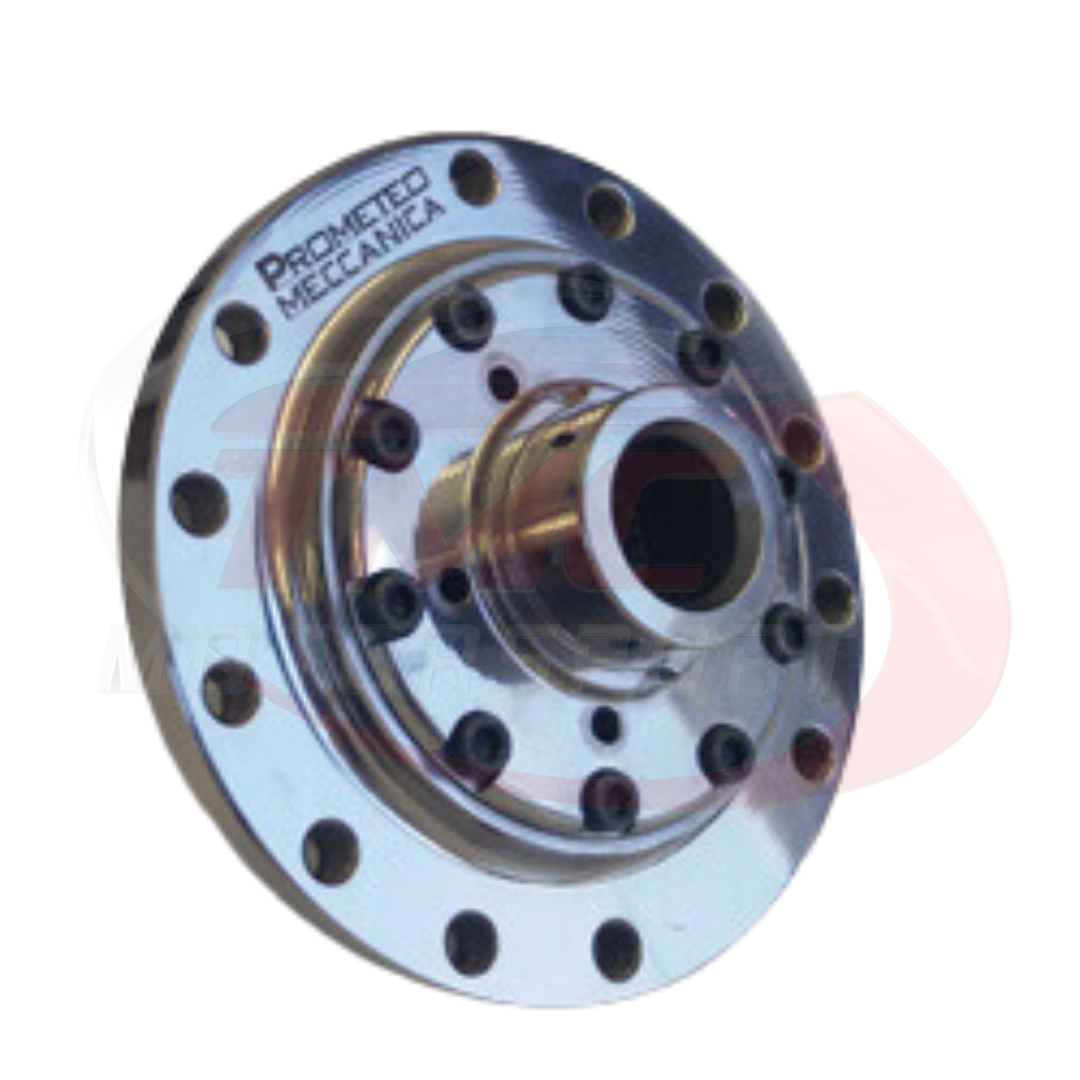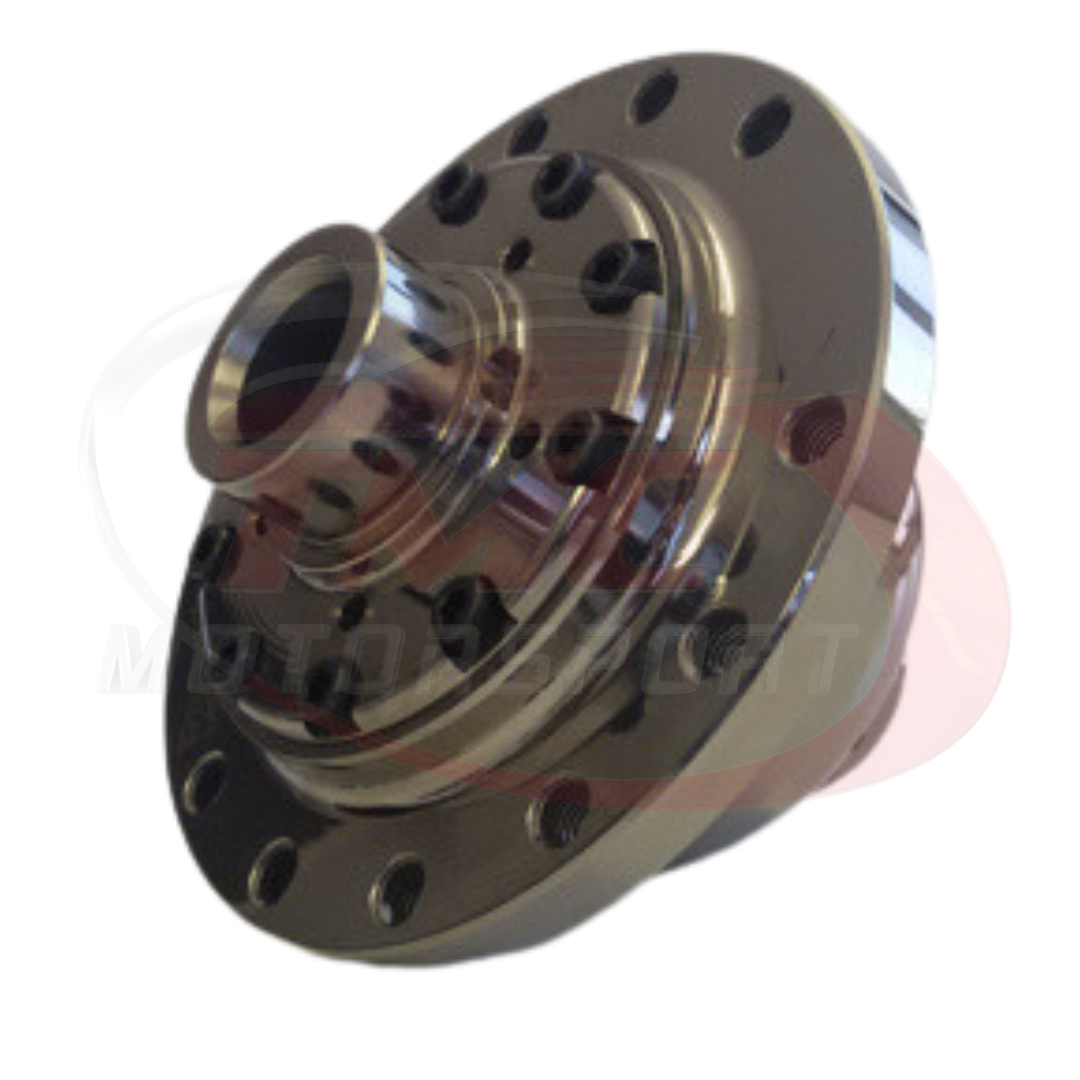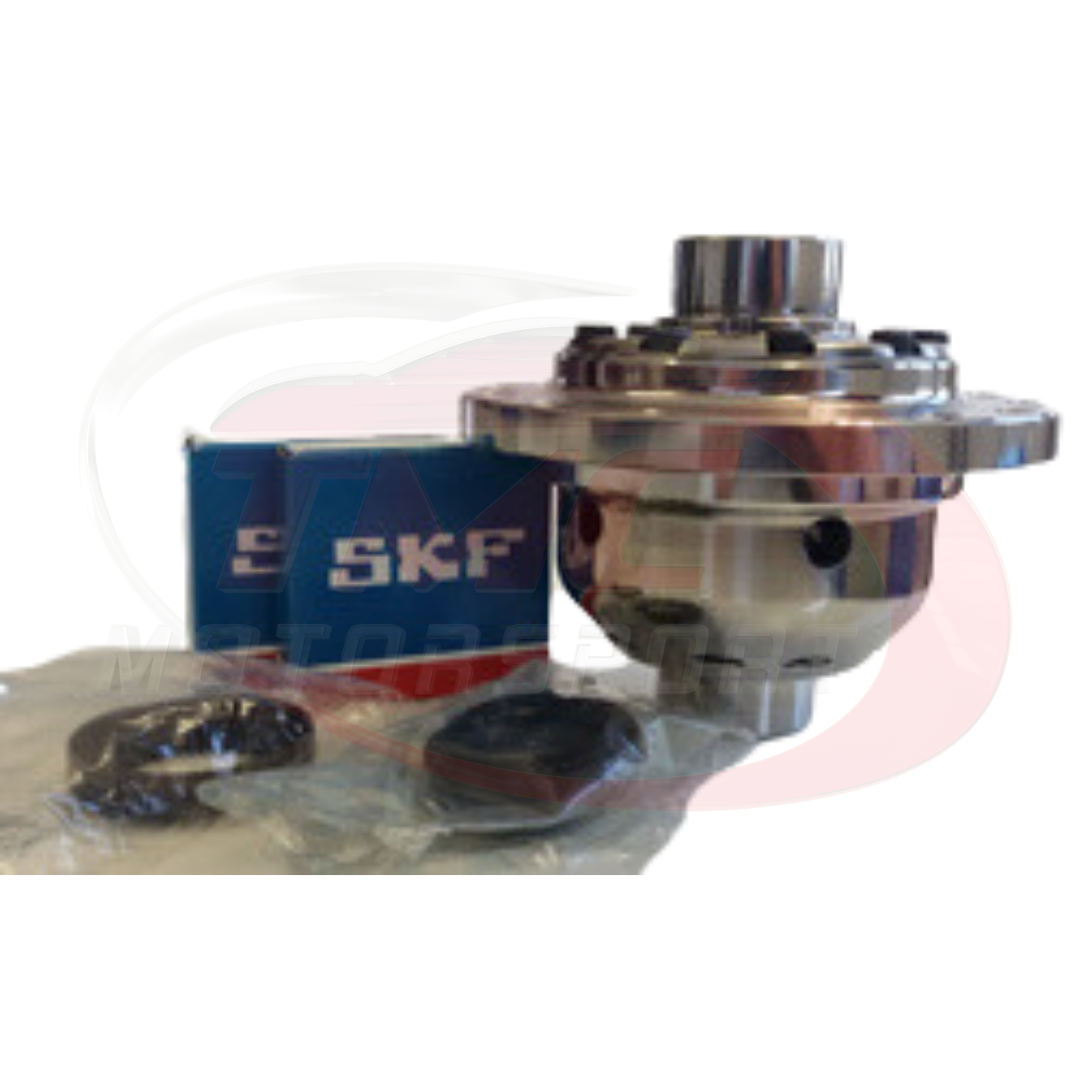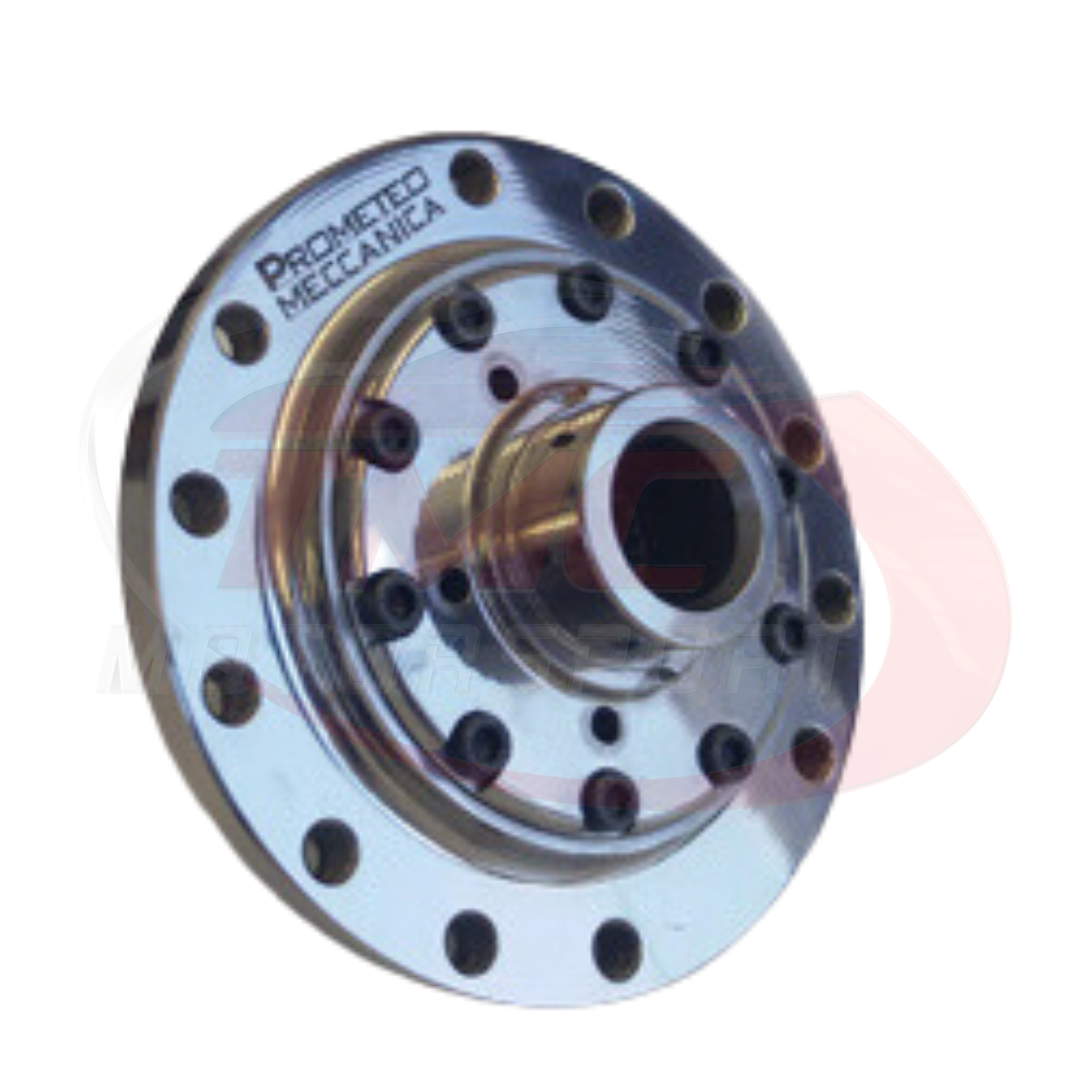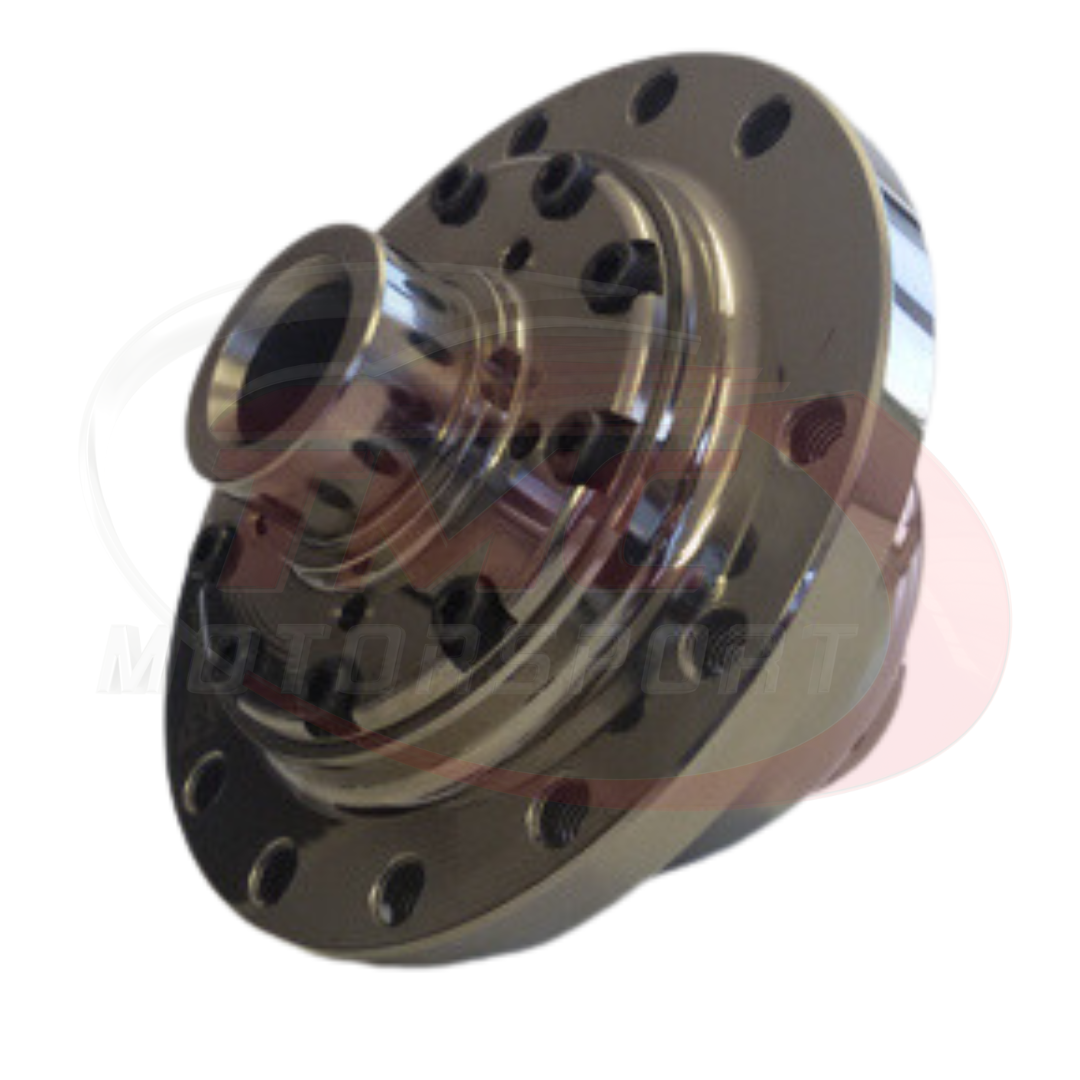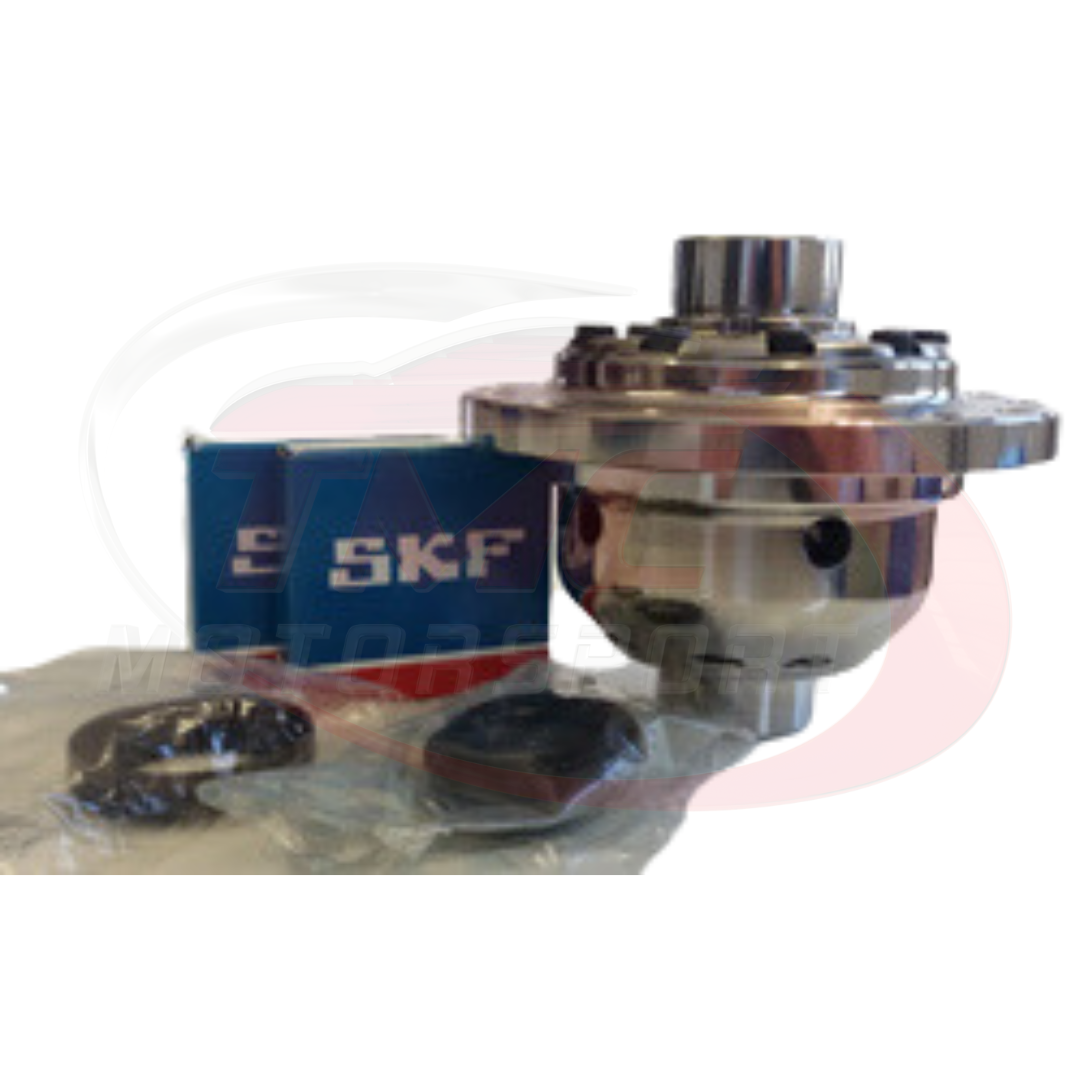|
Alfa Romeo 4C is a high power sports car with a limited mass, so it's often not able to unload to the ground the big amount of engine torque.
This situation usually happens in turning entry or exit, where internal wheel is partially unloaded by current weight because of centrifugal load drive; so, one wheel is able to unload to the ground an amount of torque far smaller than the other one.
Note that an open (=standard) differential is characterised by the fact that it always divides the torque in two identical shares; so the maximum torque which can be unloaded to the ground is conditioned by the grip of the less loaded wheel.
Prometeo self-locking differential with helical gears (also called "Limited Slip Differential") allows to share in an asymmetric way the driving torque coming from the engine. This means that the wheel with more grip will get an extra torque respect to the other (more unloaded) wheel.
Prometeo self-locking differential has been successfully tested on Alfa 4C driving on track with more than 300 HP and about 420 Nm torque.
Alfa 4C is a rear driving axle with mid-engine design, so a complete review of the working philosophy and locking rate, respect to front axle sports car LSD, was necessary.
Locking rate under acceleration is about 30%, and under deceleration is 40%. According to our simulations and tests, this is the better locking design, able to get high level performance in sports challenges without annoying effects during normal road drive.
Alfa 4C is normally equipped with an electronic device called Q2 (evolution of TTC system of front drive cars), which SIMULATES a self-locking differential. When a drive wheel loses grip, ECU gives an electric pulse to brake caliper of the slipping wheel; the negative torque added to the wheel allows to mislead the open differential, leading an identical torque amount to higher grip wheel.
Q2 is a considerable and safe system, that permits a good control of the vehicle, but – we insist – it’s not a self-locking differential and it doesn’t guarantee the performances which only a well-made self-locking differential can give. Prometeo self-locking differential is compatible with Q2 and it does not affect its work.
If you use to drive your car on track or you are annoyed by unpleasant slipping of wheels at every wild corner exit, a real self-locking differential is your solution.
How does a self-locking differential work?
First of all, consider the open (=standard) differential in the rear axle.

Differential is a device able to share the torque coming from the gearbox in two exactly identical halves, irrespective of wheel speed difference on the same axle.
So, as you can see in the image above (a car driving along a straight road), said 100 (arbitrary units) the torque coming to the differential, every wheel will receive a torque of 50.
There is another important factor to be taken into account: the grip of the tyres to the ground. Torque can be unloaded to the ground until grip limit of the wheel; this limit is proportional to the load amount acting on the wheel and to the grip factor, which is strictly dependent from soil condition, as well as tyres, obviuously.
When the car drives a high speed turning, centrifugal force makes external wheel more loaded than internal one, that reduces its load and consequently its grip limit. According to the said feature of the differential, i.e. a torque equal-sharing mechanism, the same amount of torque will be on the other wheel, although it has increased its grip.
So, if one of the wheels of rear drive goes over a zone of less grip (i.e. slippery asphalt), or it is low-loaded in driving a fast curve (internal wheel), the torque that this wheel can unload to the ground is reduced because it reaches its slipping limit. Due to the standard differential feature said before (mechanism sharing in equal parts the coming torque), the same (low) torque value will go to the other wheel, although it would have a good grip to the ground.

As you can see in the previous picture, representing a car in a right turning entry, load on internal wheel decreases and it can unload to the ground only an amount of torque of 20. As an open (standard) differential is on, external wheel can unload to the ground 20 only, too. So, whole traction of rear driveline does not go over the value of 40.
If we install Prometeo self-locking differential removing the standard one, traction is improved. Let’s see how and how much.
First of all, in condition of good and uniform grip, self-locking differential behaves as an open differential, as shown in the following picture.

In a turning entry, the external wheel gets an extra torque to internal wheel. So, whole rear driveline torque unloaded to the ground is higher than the torque unloaded by an open differential.
Following picture is very explanatory of the way of working.

The rate of 40% under deceleration (30% under acceleration) is the best compromise found during simulations and tests made in different conditions. Don’t forget that an excessive locking rate would make the car too understeering in normal drive, with consequent troubles to the driver. On the other hand, a too small locking rate would have reduced self-locking differential advantages, making it substantially unuseful.
|
